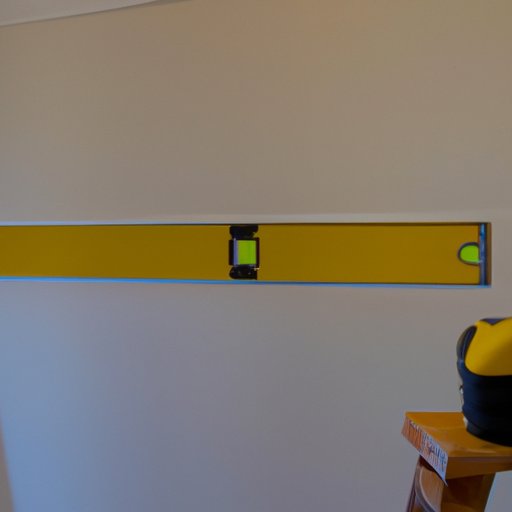
Introduction
Have you ever wondered how to accurately measure the square footage of a wall? It’s an essential skill for any DIY enthusiast or home improvement project. Knowing how to calculate square feet of a wall can also help you save time and money, whether you’re purchasing wallpaper or carpeting. This article will break down the steps involved in measuring the square footage of a wall, provide helpful tips and tricks, and share some real-world examples of why this skill is so important.
Step-by-step guide
Before you start measuring, it’s important to have the right tools on hand. You’ll need a measuring tape, a pencil, and a calculator. Here are the steps involved:
- Start by measuring the width of the wall. Measure from one corner to another and take note of the measurement in feet and inches.
- Next, measure the height of the wall from floor to ceiling. Take note of this measurement in feet and inches as well.
- To calculate the total square footage of the wall, multiply the width by the height. For example, if the width of the wall is 10 feet and the height is 8 feet, the total square footage would be 80 square feet (10 x 8 = 80).
- If there are any doors or windows in the wall, measure their width and height as well. To calculate their square footage, multiply the width by the height of each and then subtract this total from the total square footage of the wall. For example, if there is a window that is 3 feet wide and 4 feet tall, the total square footage of that window would be 12 square feet (3 x 4 = 12). If the wall’s total square footage is 80 square feet and the total square footage of the window is 12 square feet, subtract 12 from 80 to get a final square footage of 68.
While it’s a straightforward process, there are some tips and tricks to make the process smoother. For instance, when measuring, it’s a good idea to measure twice to ensure accuracy. It’s also important to write down each measurement as you go to avoid losing track of the numbers.
Video tutorial
If you prefer to learn visually, check out this video tutorial demonstrating how to calculate the square footage of a wall:
Infographic
For a quick reference guide, check out this infographic that summarizes the steps involved in measuring the square footage of a wall:
Feel free to share this infographic with others on social media.
Common mistakes to avoid
While measuring the square footage of a wall may seem simple, there are some common mistakes people make that can affect the accuracy of the measurement. One common mistake is measuring around doors and windows instead of subtracting their square footage from the total calculation. Other mistakes include not measuring to the nearest quarter inch or forgetting to account for trim or molding. Always be sure to double-check your measurements and account for any obstructions or objects on the wall.
Real-world examples
Knowing how to calculate the square footage of a wall is essential in many real-world situations. For instance, when purchasing wallpaper or carpeting, you’ll need to know the exact measurements of the wall to determine the amount of materials needed. It can also be useful when painting a room or installing shelving. Accurate measurements can save time and money by ensuring you purchase the right amount of materials the first time around.
Comparison with other measurement methods
While measuring the square footage of a wall is useful in many situations, it’s not always the most appropriate measurement method. Other methods, such as cubic feet or linear feet, may be more appropriate depending on the project. For instance, if you’re installing baseboards or crown molding, measuring in linear feet may be more helpful than square feet. If you’re trying to determine how much air a room can hold, cubic feet would be a better measurement to use. It’s important to consider the project at hand to determine which measurement method is appropriate to use.
Conclusion
Measuring the square footage of a wall is an essential skill for any DIY enthusiast or home improvement project. By following these steps and avoiding common mistakes, you can accurately measure the square footage of any wall in your home. Remember to always double-check your measurements and consider which measurement method is most appropriate for your specific project. With this skill in your toolkit, you’ll be able to make more informed decisions, save time, and save money on future home improvement projects.




